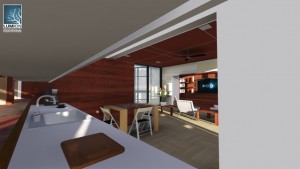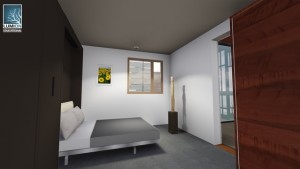By Avery Smith
Crowder + Drury (Shelter3)
Communication Team Member
On May 4th, 2003, 86 tornados were recorded across the Midwest. Four of those storms were rated EF4, and two of those storms, the Gladstone and North Kansas City tornados, landed just minutes from my house. I can still remember my family huddled together in our basement, playing card games and nervously laughing about the raging storm outside. My neighborhood was lucky. Our homes lost a few shingles and some big branches were blown down, but other communities around us weren’t so fortunate. Several neighborhoods around us were totally destroyed. In total, those two storms caused $20 million in property damage, injured many, and killed two.
Eight years later, on May 22nd, 2011, one EF5 rated tornado landed in Joplin, Missouri. This single storm swept through the heart of the city, causing $2.8 billion in property damage, injuring over 1,000 people, and killing 162.
 The fact of the matter is that tornados are a way of life in the Midwest. Traditional home designs are not designed to handle the high winds, pressure fluctuations and flying debris that accompany tornados. In fact, the design failures of traditional homes intensify a tornado’s total damage, adding more loose debris with every structure destroyed.
The fact of the matter is that tornados are a way of life in the Midwest. Traditional home designs are not designed to handle the high winds, pressure fluctuations and flying debris that accompany tornados. In fact, the design failures of traditional homes intensify a tornado’s total damage, adding more loose debris with every structure destroyed.
Enter The Solar Decathlon, an international, biannual competition hosted by the U.S. Department of Energy. Collegiate teams from around the world work to design the most energy-efficient home for under $250,000. 50 teams applied, 20 were accepted, and 14 have survived the gauntlet of checkpoints to compete head-to-head in Irvine, California. From October 7th to October 18th team members will give tours to the public and juries of industry professionals, who will judge the homes across 10 criteria.
The Crowder + Drury team recognized this prime opportunity to design and build a home that is not only energy efficient, but also able to survive a tornado and protect its residents. With the tragedy of Joplin fresh on our minds, we set to work designing and building Shelter3.
 With Shelter3, the Crowder + Drury Decathlon team addresses the major issues that cause failures in traditional home designs. Shelter3’s frame is built with double the material used by traditional designs and reinforced with a steel chassis, which anchors the home’s roof to the foundation, preventing a separation, (the most common structural failure in traditional home designs).
With Shelter3, the Crowder + Drury Decathlon team addresses the major issues that cause failures in traditional home designs. Shelter3’s frame is built with double the material used by traditional designs and reinforced with a steel chassis, which anchors the home’s roof to the foundation, preventing a separation, (the most common structural failure in traditional home designs).
The home’s exterior features Swiss Pearl fiber-cement siding, underneath which a layer of bulletproof Lexan material sheaths the entire structure. Shelter3’s folding storm doors are built with Lexan and steel materials, and all of the doors and windows are hurricane-rated.
To the Crowder + Drury team, Shelter3 is more than just a cool idea. It’s our response to Joplin, North Kansas City, Gladstone, and the countless other storms that have ravaged our communities. Shelter3 is our effort to provide a home that will protect the lives of our neighbors, friends and family members, because when it comes to tornados in the Midwest, it’s not a matter of if, but when.
To learn more about the Crowder + Drury (Shelter3) be sure to follow them on Facebook, Twitter, Instagram, YouTube, and Pinterest.
